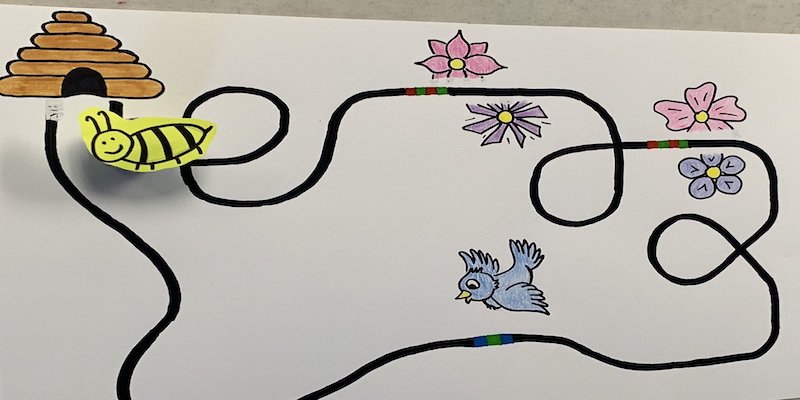It’s getting swarm outside, which means our little yellow friends are becoming more active outside the hive. While they may be seen as a nuisance for some, it is un-bee-lievable what these little insects do for us. Okay, we’re done pollen your leg with all the bee puns, for now.
What do bees do for us?
Bees are pollinators. They travel from flower to flower, collecting nectar and leaving pollen behind with each stop. They pollinate the flowers, allowing plants to thrive. Because of this, honeybees are said to be responsible for one-third of our food! Some of the world’s most loved fruits and vegetables would cease to exist if not for honeybees. Can you bee-lieve that?
They also bee-utify our planet! “By keeping flowers pollinated, bees perpetuate floral growth and provide attractive habitats for other animals such as insects and birds,” writes Jessica Tucker from One Green Planet. We couldn’t imagine a life without flowery gardens!
Some products that we love are also made possible because of bees, including beeswax (lip balms, candles, etc) and honey.
Colony Collapse Disorder: Are honey bees still at risk?
Back in 2006, beekeepers started reporting a shift in the behavior of honey bees. Adult honeybees were abandoning their hives for unknown reasons, leaving behind the queen and immature bees. Some of these bees were found dead in hives or around them. Without adult worker bees, hives would simply die. This phenomenon earned the name Colony Collapse Disorder or CCD.
Scientific studies are still ongoing with regards to CCD and its root cause and impact, however, the Environmental Protection Agency does outline several factors contributing to the general declining health of honey bees. These include pests, pathogens and viruses, poor nutrition due to loss of foraging habitat and presticide exposure.
While the bees are not exactly going extinct any time soon, they do need our help. There are still many bee deaths with unknown causes. In order to prevent another rapid colony decline, there are simple things we can do to bee-nefit them.
Some examples from The Honeybee Conservancy include: planting a bee-friendly garden, avoiding harmful pesticides, creating a bee bath, or sponsoring a hive.
Spread awareness using Evo and Bit!
I was recently asked to demonstrate pollination using Evo at a local elementary school. Using Color Codes, I created a map showing a day in the life of a honey bee. The Evo-bee starts out in its hive, flies from flower to flower to collect nectar and pollinate, then flies back home. Meanwhile, it tries to dodge the harmful birds that may be lurking in the sky.
We’ve also seen some awesome content shared with us on Twitter featuring Evo as a honey bee, like this cool garden track from Ms. Kafie:
Kinders made some gardens for the ozobot to go through! They also made some ozo animals. We had soo much fun watching as they travelled through all the gardens! 🐝🐞🦋🌻#spring #kinders #ozobot pic.twitter.com/xF2zDuEAjo
— Ms. Kafie (@M_Kafie_) April 20, 2018
With Earth Day quickly approaching, we can easily incorporate bee-inspired lessons into the classroom to educate students on the significance these insects have in our environment.









